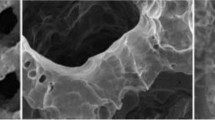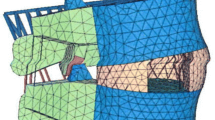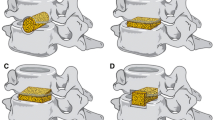Abstract
Many new interbody fusion cages have been recently developed, but clinical studies analyzing fusion outcome are still scarce. Radiological methods to assess fusion are not standardized and are often unreliable. Cages have been stated to provide good segmental distraction, provide axial load support and reduce segmental mobility, but there have been reports of failed fusions because of implant failure. This paper presents a critical opinion on current cage designs, stressing their clinical and biomechanical implications. Threaded cage designs compromise endplate integrity, and when placed in pairs have inherent limitations for distraction. Non-threaded cage designs usually preserve endplate integrity, but geometry may be inadequate to provide a good surface match to the endplate. The concept of an open frame type cage is believed to have biological advantages, because large graft volumes inside the cage can be in direct contact with host bone. Cadaveric tests suggest that open frame constructs have compressive strength similar to that of full surface contact cages. Restoration of segmental height, sagittal balance and increased neuroforaminal clearance are all functions of disc space distraction. The effect of cage instrumentation on axial load distribution, however, is not well understood. Biomechanical experiments strongly suggest supplementing cage instrumentation with posterior fixation, to achieve a marked increase in initial segmental stability. In the absence of gross segmental instability, micromotion at the host graft interface may still exist. As a result, fusion will never occur, instead a pseudoarthrosis will develop. For monitoring fusion, the use of non-metallic cages has distinct advantages, because no metal artifacts will disturb radiological assessment.
Similar content being viewed by others
Author information
Authors and Affiliations
Additional information
Received: 2 November 1999/Accepted: 2 November 1999
Rights and permissions
About this article
Cite this article
Steffen, T., Tsantrizos, A., Fruth, I. et al. Cages: designs and concepts. E Spine J 9 (Suppl 1), S089–S094 (2000). https://doi.org/10.1007/PL00010027
Issue Date:
DOI: https://doi.org/10.1007/PL00010027




